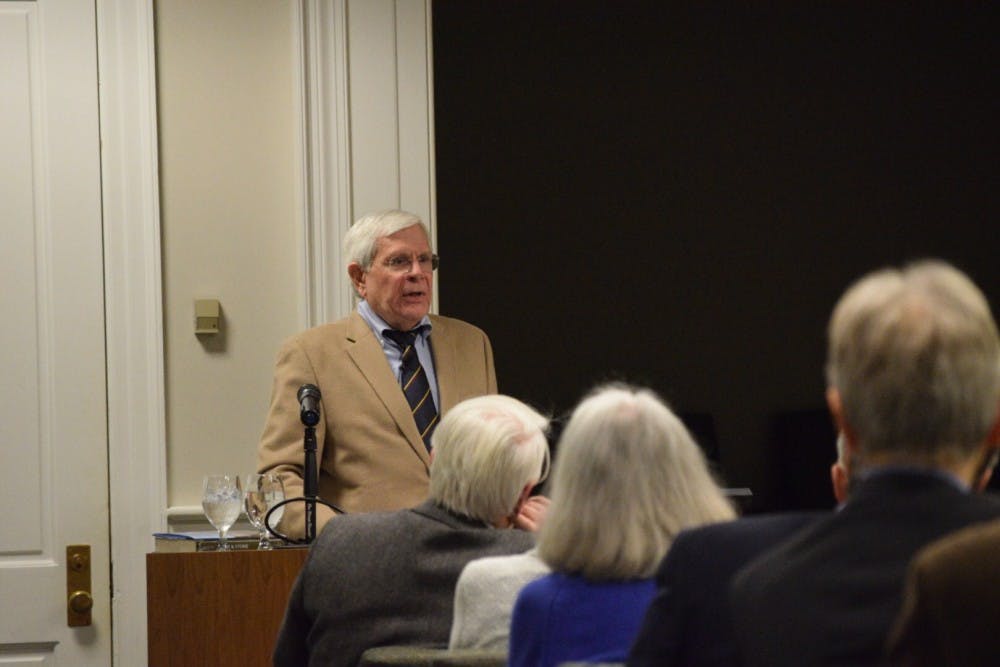When Carolina Dining Services renamed Rams Head Dining Hall to “Chase Dining Hall” in 2017, UNC students posted memes on Twitter and Facebook expressing their distaste for the change.
But nearly two years later, students got a chance to understand why the change was made.
During a lecture held at Wilson Library, North Carolina author Howard E. Covington Jr. explained why former UNC President Harry Woodburn Chase has a building named after him in the first place.
Covington spoke at the launch event for his recent book “Fire and Stone: The Making of the University of North Carolina Under Presidents Edward Kidder Graham and Harry Woodburn Chase.” The book is the second volume in the Coates University Leadership Series, which publishes works on former UNC presidents and chancellors. The series is funded by the Albert and Gladys Coates Endowment Fund for the North Carolina Collection.
“We see it as a way to help people understand the really fascinating history of the University and how the skills, the personalities, the leadership styles of the chancellors influenced the directions of the University,” said Robert Anthony Jr., curator of the North Carolina Collection at Wilson Library.
At the event, Covington talked about how Graham and Chase’s careers as University presidents were deeply connected.
Graham, a Charlotte native and UNC graduate, was elected as UNC president by the Board of Trustees in 1914 following a sabbatical-turned-resignation by the president at the time, Francis Preston Venable.
“(Graham) was approachable, engaged and one that wanted to be a part of the world,” said Covington.
During his time as president, Graham focused on expanding the services of the University throughout the state. By inviting organizations like the Farmers Union and small businessmen to campus, Graham chipped away at the University's reputation as an elitist institution, Covington said.



